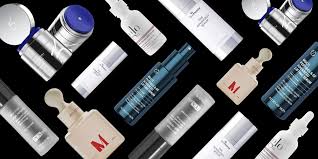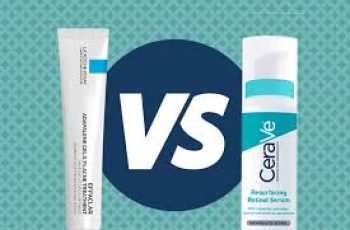
Growth Factors in Skin Care
There are many types of growth factors in skin care products. Which growth factors are best for antiaging? The answer is complicated. This blog will review the human growth factors, which growth factors are in topical skin care, and problems and safety of growth factors in skin care products.
Looking for the best growth factor serums?
You should shop for products using your Baumann Skin Type. Its the only way to find products that are right for your skin concerns.
The best way to know is to take the skin type quiz and get a dermatologist-recommended skin care routine. You will be able to choose from growth factor products from many brands if they are right for you. Whether you are looking for affordable growth factor serums or luxury creams, we
can help and you will be able to read reviews from others with your same skin type.
Before you spend a lot of money on expensive growth factor serums, make sure they are right for YOU!.
Discovery of Growth Factors
Skinmedica was the first company to come out with growth factors in skin care products. SkinMedica uses an ingredient called tissue nutrient solution in their growth factor serums. It is a combination of many types of growth factors.
What are growth factors?
Growth factors (GFs) are special proteins or steroid hormones that are made by various cells like keratinocytes, fibroblasts, platelets, and certain immune cells. GFs are signals used to change gene expression or communicate with other cell structures. Because of this, GFs play a crucial role in how cells move, grow, multiply, and change.
There are many types of GFs. Some of them can revitalize older skin cells like keratinocytes and fibroblasts, making them work better. However, it’s essential to understand that GFs don’t act alone. They work together as a team, where each player has a role. If you remove one player (or type of growth factor), it can change the whole game’s dynamics. That’s why when we study GFs individually, it’s hard to see the full picture of what they can do.
When we talk about growth factors in skin, there are epidermal derived and dermal derived growth factors that have different effects. What they do depends upon which ones are present.
Many skin serums use only one or two types of growth factors. TNS, or human conditioned fibroblast media- is the growth factor ingredient in SkinMedica products. TNS containing products have only dermal-derived GFs. This is not the same as what occurs naturally in the skin where epidermal and dermal derived growth factors work together. However, SkinMedica has new technology knowns as TNS-MR that has a wider range of growth factors which makes the SkinMedica TNS Advanced + Serum the best growth factor serum.
What do growth factors in skin care products do?
Growth factors are used to rejuvenate the skin. They prompt fibroblast skin cells to make important things that the skin needs to look younger such as collagen, elastin, and glycosaminoglycans. Loss of these skin components causes wrinkles, thin skin, and sagging.
What growth factors do in skin:
Affect cells close to where they are produced.
Regulate cell growth, proliferation, and differentiation.
Bind to specific receptors on the surface of their target cells.
Increase the production of collagen, hyaluronic acid, and elastin, which are key components for maintaining skin’s elasticity and hydration.
Speed skin healing
Make skin look smoother and younger
Exfoliate by promoting cell turnover and shedding of the older outer skin layers
Formulation of Skin Care Products With Growth Factors
Lorem ipsum dolor sit amet consectetur adipisicing elit. Illum neque eaque, autem sit soluta, voluptatum libero magnam tempore ullam at harum vel, ad reprehenderit, nemo veniam quas in voluptas hic. Lorem ipsum dolor, sit amet consectetur adipisicing elit. Natus id officia omnis suscipit aut architecto repellat a quia eaque reiciendis blanditiis perferendis hic, nihil, mollitia. Iste velit aperiam, numquam dolorem.
most common growth factors
List of growth factors in skin care products.
Click the growth factor (if underlined) to learn more about how it works in skin.
Epidermal Growth Factors
Fibroblast Growth Factors
Insulin-like Growth Factor (IGF)-I
Keratinocyte Growth Factor
Platelet-derived Growth Factors
Transforming growth factor alpha
Transforming Growth Factor β (TGF-β)
Vascular Endothelial Growth Factor
best anti-aging growth factors
Which growth factor is best as an antiaging ingredient?
TGF-β has the most data to support its use for antiaging.
Platelet derived growth factors found in exosomes have also been shown to be beneficial to treat aged skin.
You can learn more about which is best: stem cells, exosomes, or growth actors at this link.
Are Growth Factor Serums Worth The Price?
Growth factor serums are expensive. Are they worth it? It depends upon how well they are formulated, how long they have been in the cream and on the shelf, where they are stored, if they are stored in air conditioning, and what other products they are used with in the skin care routine.
Problems with growth factors in skin serums that decrease effectiveness
Skin products with growth factors are a waste of money if active growth factor do not make it deep into the skin’s dermis where the fibroblasts are.
There are many issues that make it difficult for active growth factors to penetrate into these layers such as:
Unstable in the bottle or jar
Difficulty penetrating into the skin because they are too big (2, 3)
Rapidly broken down by protease enzymes on and in the skin
Damaged by free radicals (5)
Do not make it to the target receptors
Inactivated before they can do anything
Short half life (5)
For these reasons, the way that the growth factor products are formulated, how they are layered with other ingredients, and the step they are used in the skin regimen is very important!
Your skin care routine affects how well growth factors work
The presence of other products in your routine has a huge effect on growth factor serum effectiveness. For example, low pH cleansers lower the skin’s pH which could inactivate growth factors unless a higher pH moisturizer is layered on top.
These issues affect how well growth factors work in your skin routine:
Skin pH
Presence of occlusives
Presence of penetration enhancers
Presence of heparan sulfate
Status of the skin barrier
Are growth factors safe?
There has been a lot of buzz around growth factors (GFs) and their potential benefits, but there is still a lot we don’t know about the safety of cosmeceutical GFs. For instance, we are not entirely sure which GFs or their combinations in beauty products might promote or prevent skin cancer. What we do know is that certain skin cancers have receptors for the Epidermal Growth Factor (EGF), and when EGF is present, the outlook isn’t so great. And there are skin care products that proudly tout the presence of EGF in them! Yikes!
Some studies suggest that factors like EGF, TGF-α, FGF, VEGF, and PDGF might have negative roles in cancer.
Skincare products with GFs taken from fibroblast cells have been available for years. But here’s the catch: we don’t have a clear picture of how safe they are, especially for those with skin cancer. While there haven’t been any reported cases of skin cancer directly linked to growth factors in skin care products, a lawsuit in 2014 raised concerns about undisclosed risks. This lawsuit was eventually dismissed in 2018. The lingering worry? That these GFs might encourage unwanted skin cells to grow. So, if you choose to use GFs, watch your skin for any unusual growths and see a dermatologist immediately if you see anything suspicious.
does growth factor serum work
Find the best antiaging products for you by shopping by your Baumann Skin Type!
Take the Quiz
Growth factor products:
Neocutis BIO CREAM FIRM RICHE – Extra Moisturizing Smoothing & Tightening Cream
$83.00
Add to Cart
Neocutis BIO GEL FIRM Moisturizing Hydrogel
$83.00
Add to Cart
Neocutis MICRO GEL – Moisturizing Hydrogel 50 ML
$207.00
Add to Cart
SUZANOBAGIMD Retivance Skin Rejuvenating Complex
$150.00
Out of Stock
Biopelle Tensage Stem Cell Cream
$180.00
Add to Cart
EltaMD PM Restore Moisturizer
$17.00
Add to Cart
ISDIN Age Contour
$120.00


